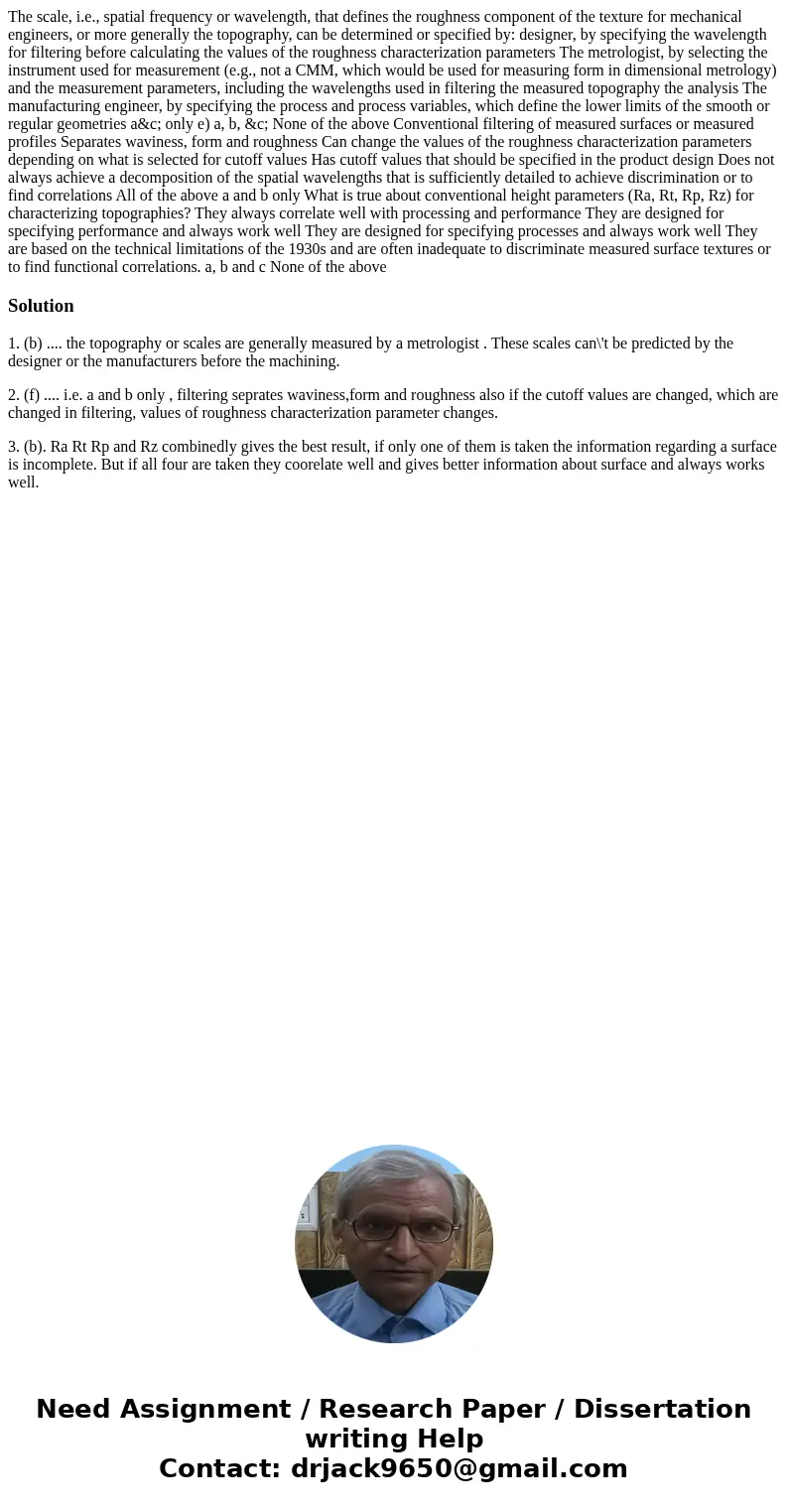The scale ie spatial frequency or wavelength that defines th
The scale, i.e., spatial frequency or wavelength, that defines the roughness component of the texture for mechanical engineers, or more generally the topography, can be determined or specified by: designer, by specifying the wavelength for filtering before calculating the values of the roughness characterization parameters The metrologist, by selecting the instrument used for measurement (e.g., not a CMM, which would be used for measuring form in dimensional metrology) and the measurement parameters, including the wavelengths used in filtering the measured topography the analysis The manufacturing engineer, by specifying the process and process variables, which define the lower limits of the smooth or regular geometries a&c; only e) a, b, &c; None of the above Conventional filtering of measured surfaces or measured profiles Separates waviness, form and roughness Can change the values of the roughness characterization parameters depending on what is selected for cutoff values Has cutoff values that should be specified in the product design Does not always achieve a decomposition of the spatial wavelengths that is sufficiently detailed to achieve discrimination or to find correlations All of the above a and b only What is true about conventional height parameters (Ra, Rt, Rp, Rz) for characterizing topographies? They always correlate well with processing and performance They are designed for specifying performance and always work well They are designed for specifying processes and always work well They are based on the technical limitations of the 1930s and are often inadequate to discriminate measured surface textures or to find functional correlations. a, b and c None of the above
Solution
1. (b) .... the topography or scales are generally measured by a metrologist . These scales can\'t be predicted by the designer or the manufacturers before the machining.
2. (f) .... i.e. a and b only , filtering seprates waviness,form and roughness also if the cutoff values are changed, which are changed in filtering, values of roughness characterization parameter changes.
3. (b). Ra Rt Rp and Rz combinedly gives the best result, if only one of them is taken the information regarding a surface is incomplete. But if all four are taken they coorelate well and gives better information about surface and always works well.

 Homework Sourse
Homework Sourse